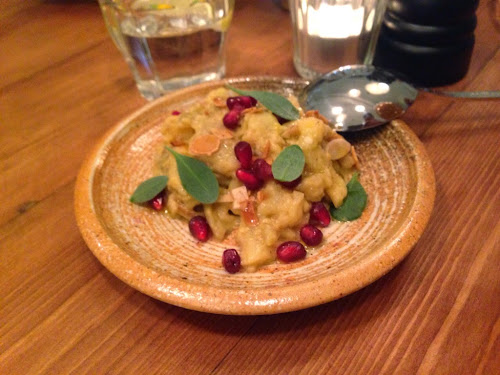Making sense of Gose
Neil, Eating isn't Cheating
Friday, August 26, 2016
It's happened again.
Over ten years ago it happened with imperial stout - at first too heavy, too rich, too full. Then slowly, over the course of a year or so it started to make sense, the smoothness, the depth, the generousness of flavour and body you get in a well-made strong stout. Something clicked.
Then on a trip to Belgium in the first month of 2012 it happened again, as I struggled to get my head around lambic, and in particular gueuze, this sharp, acidic, bracing sourness that seemed so far removed from what I thought of when I thought of beer - particularly when compared to the sweet and spicy nature of so many Belgian beers.
But then, again, there was that distinct clicking noise and lambic shifted in to focus. It's lemon sorbet, it's riesling, it's sharp acidity and background funk and excitement in a way that few other beer styles achieve. Then, once again, I was hooked.
It's been a while since I've had one of these moments of clarity when it comes to beer, but it happened very recently and very suddenly with Gose. The saltiness of it was off-putting - alkaline, minerally and thinly saline like watered down eye drops.
I couldn't ever see myself enjoying it, but I persevered, and slowly like the moment the salty umami twang of a dirty martini becomes something you crave rather than endure - Gose started to make sense.
The subtle background sourness, the subdued, furry peach skin fruit notes, the almost isotonic quality of that subtle salt sprinkle, but mostly, that refreshment. Like nothing else in the beer world, Gose manages to hit every part of your mouth with flavour but be so subtle about it, with such an unbeliavably quenching quality that makes it thoroughly sessionable.
It's delicious, I'm totally hooked, and I never saw it coming.
Over ten years ago it happened with imperial stout - at first too heavy, too rich, too full. Then slowly, over the course of a year or so it started to make sense, the smoothness, the depth, the generousness of flavour and body you get in a well-made strong stout. Something clicked.
Then on a trip to Belgium in the first month of 2012 it happened again, as I struggled to get my head around lambic, and in particular gueuze, this sharp, acidic, bracing sourness that seemed so far removed from what I thought of when I thought of beer - particularly when compared to the sweet and spicy nature of so many Belgian beers.
But then, again, there was that distinct clicking noise and lambic shifted in to focus. It's lemon sorbet, it's riesling, it's sharp acidity and background funk and excitement in a way that few other beer styles achieve. Then, once again, I was hooked.
It's been a while since I've had one of these moments of clarity when it comes to beer, but it happened very recently and very suddenly with Gose. The saltiness of it was off-putting - alkaline, minerally and thinly saline like watered down eye drops.
I couldn't ever see myself enjoying it, but I persevered, and slowly like the moment the salty umami twang of a dirty martini becomes something you crave rather than endure - Gose started to make sense.
The subtle background sourness, the subdued, furry peach skin fruit notes, the almost isotonic quality of that subtle salt sprinkle, but mostly, that refreshment. Like nothing else in the beer world, Gose manages to hit every part of your mouth with flavour but be so subtle about it, with such an unbeliavably quenching quality that makes it thoroughly sessionable.
It's delicious, I'm totally hooked, and I never saw it coming.



































